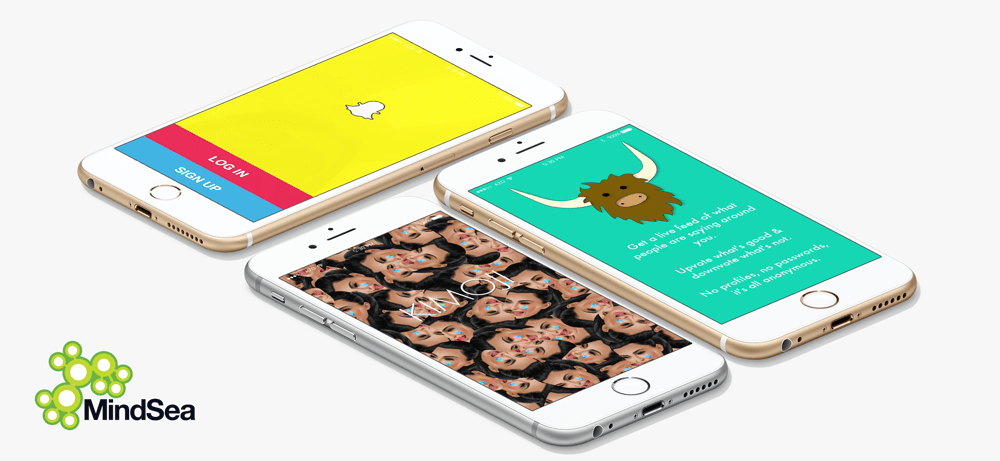
Whether we’re talking about iOS app development or Android app development, we’re often met with questions about what app ideas will connect with millennials. Over the years, we’ve built plenty of apps that have been downloaded by thousands (maybe millions?) of millennials from all over the world.
As of 2016, “millennials” are defined as those ages 19–34. There are 75.4 million millennials in America, surpassing the 74.9 million Baby Boomers (ages 51–69). As millennials are now the largest generation with buying power in the U.S., it’s essential that app makers and startups understand how this age group interacts with apps and which apps they embrace.
While it’s obvious that a 34-year-old and a 19-year-old may have different interests, unique insights can still be gathered based on the apps this generation uses. We all know that apps like Facebook, Instagram and Twitter cross over into different demographics so in this post, we’re going to discuss some of the lesser-known apps that tend to skew younger rather than older.
These apps should inspire you and help you better understand what exactly goes into making an app that millennials can’t get enough of.
Let’s begin!
Musical.ly

While Vine may have made a splash a few years ago with video, today Musical.ly is one of the hottest video apps in the App Store. In a research piece conducted by Business Insider, teens pointed to Musical.ly as one of their favorite apps.
Musical.ly is a free app and social media platform that allows people to make, share and discover their own music videos. It’s like karaoke for the digital age where you create and upload 15-second videos of yourself lip-syncing or dancing to a music snippet. Every day, millions of people use the app to share content and watch videos by friends and influencers with more than a million Musical.ly followers.
Since the app launched in 2015, it has raised more than $116 million from investors like GGV Capital, Greylock Partners and more. According to Mattermark, Musical.ly has a growth score higher than Snapchat’s in 2015.
Triller
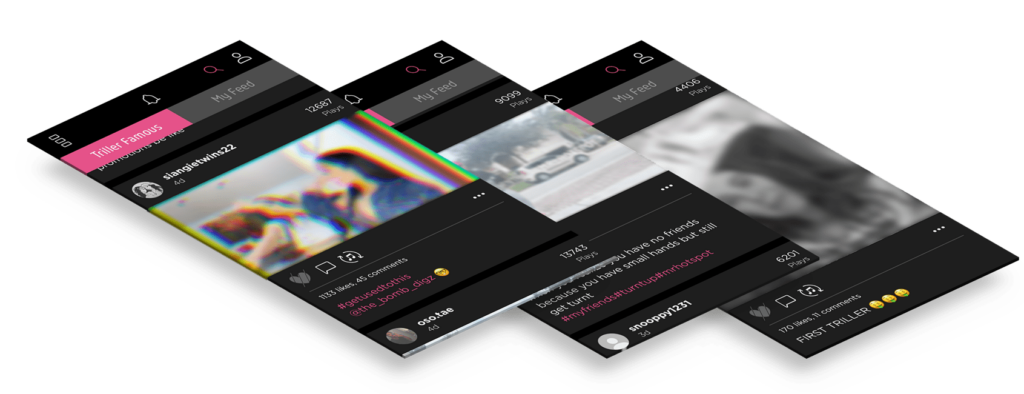
Triller helps anyone who has ever wanted to be in a music video make one from their own phone. The app is free to download and has taken off among millennials around the globe. Triller is available on both iPhone and Android and allows you to create a music video by grabbing a snippet from a song, recording a video and adding filters.
The app has nearly 60,000 reviews on Google Play, and in an interview with TechCrunch, Triller’s founder revealed it has more than 10 million downloads. Like Instagram and Vine, Triller allows users to follow and be followed, giving users the ability to become “Triller Famous.”
Kimoji
Now, before you close the tab because of your distaste for the Kardashians, consider the success of Kimoji, the emoji app launched by Kim Kardashian. Offered for $1.99 in the Apple Store and Google Play, Kimoji found itself at the top of the paid apps list six months after its launch in 2015. The New York Post reported that at one point, the app was grossing roughly $1 million per second.
We all know that emojis are everywhere. And while it’s assumed that emojis are only popular among millennials, the studies show that a love for emojis crosses all generations.

In 2015, the ‘Face with Tears of Joy’ emoji was named the word of the year by the Oxford English Dictionary. Millennials use emojis and stickers to communicate with each other, and the Kimoji app supplies pop culture expressions that aren’t readily available in the default emoji offerings.
Kik
Of all the apps on this list, Kik is one that older people most struggle to understand. While it’s not as popular with the older millennials, the younger cohort and the generation that follows them are obsessed with this messaging app.
In 2015, Kik was valued at more than $1 billion and is showing no signs of slowing down as it continues to pick up steam and drive engagement among its users. One of Kik’s key competitive advantages in creating an app that resonates with millennials is the company’s commitment to student co-ops (full-time paid internships). As part of their co-op program, Kik offers students the opportunity to own and ship product features that will be used by the masses. An example of this approach in action is Kik Codes, a feature that was shipped by a student.
Wattpad
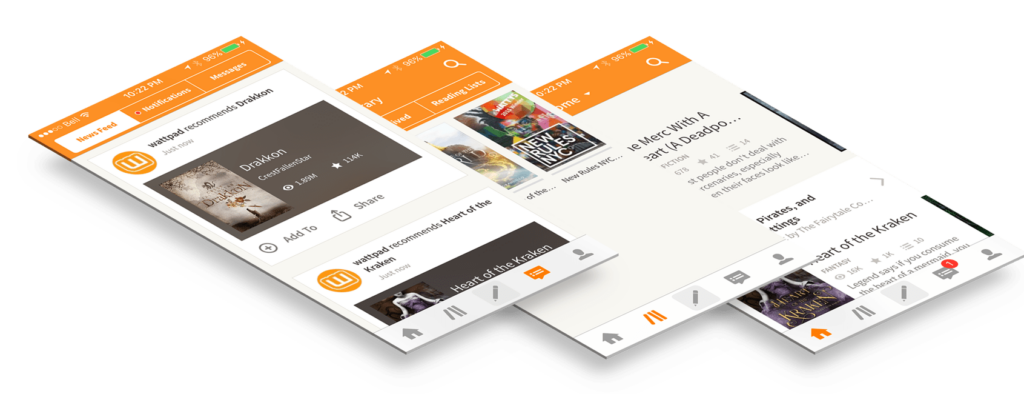
Wattpad lets people discover and share stories about the things they’re interested in. People from all over the world upload their own fanfiction, fantasy and science fiction, romance novels and more. Wattpad says it reaches an audience of 45 million people every month, with nearly 250 million stories uploaded to date. Of its user base, Mary Meeker’s 2015 report suggests that more than 90% of all users access Wattpad through mobile.
The Wattpad mobile app is a platform for finding great stories, but it also acts as a social network. Users have the ability to follow other users, send messages, comment on others’ work and build real relationships. The user interface is easy to navigate and places the focus on what matters: the story.
The Guardian described Wattpad as a global sensation in young adult literature. To suggest that it’s taken millennial reading by storm would be an understatement.
Yik Yak

One of the more controversial apps on this list, Yik Yak is an anonymous messaging app that allows users to create and view posts within their region. On university campuses, for example, students can share tidbits about events, courses, professors and typical campus culture. In 2014 and 2015 Yik Yak was in the top percentile of apps in the U.S. market among millennials.
Unfortunately for Yik Yak, the app came under scrutiny for allowing people to anonymously share content that led to threats and bullying. Though Yik Yak has continuously been in the spotlight since its launch, the backlash seems to have caused usage to plummet.
According to many reports, Yik Yak’s popularity, while still significant, has dropped for the last three years, and the app is close to falling out of the top 500, according to App Annie:
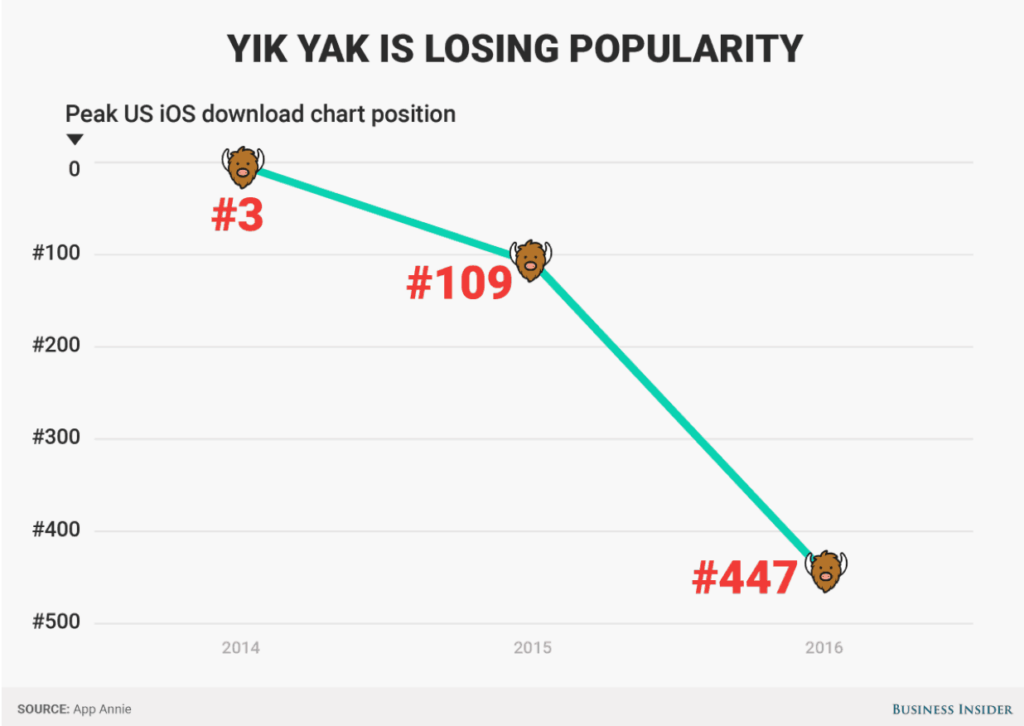
While Yik Yak app was once able to tap into a trend that resonated with millennials, the app’s inability to sustain the “cool” factor is an indication of how volatile the market can be.
Snapchat
We would be completely dropping the ball if we didn’t include Snapchat.
What started off as a photo sharing app in which the image disappeared has grown into a company with a millennial attitude that’s taking on tech giants like Facebook and Google. Snapchat first took off at campuses across America (similarly to Facebook); today, Snapchat is valued at $10–$20 billion and has over 100 million monthly active users. And 71% of those users are under the age of 25.
Despite its popularity, the user experience for Snapchat is considered by many users to be confusing and unintuitive. If you ask a group of 30 people what they think of Snapchat’s design, the odds are good that a few people will love it and a few will hate it. The design is focused around the camera, with little direction to users on what they can and cannot do within the app.
We Heart It
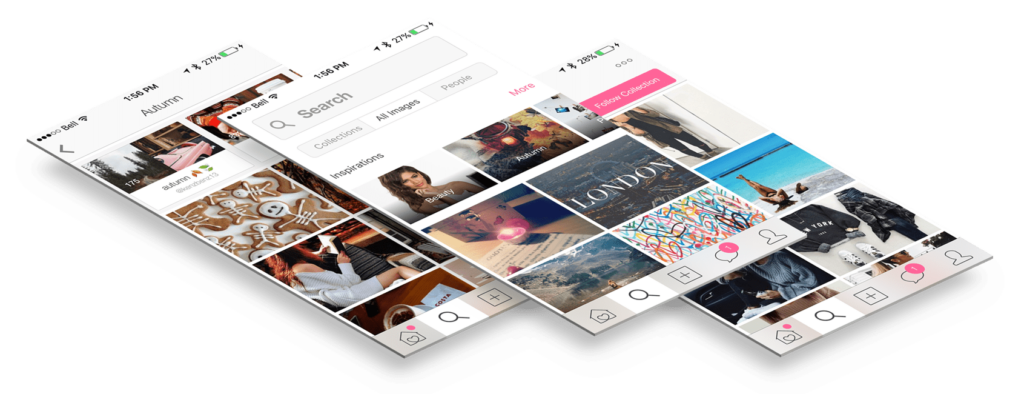
Used by millions of women worldwide, We Heart It is a visually based social network reminiscent of Pinterest with a dash of Tumblr. Users have the ability to create collections, follow other accounts, upload their own content and find inspiration from the community.
The app was created in 2011, and in December 2015, TechCrunch reported that the site was being used by more than 40 million teens. According to a report from Mashable, roughly 80% of We Heart It’s monthly users are under the age of 24. The most interesting element of the We Heart It story is the fact that 80% of the platform’s activity comes from mobile devices. By recognizing that the younger demographic is more accustomed to using mobile than other devices, We Heart It has clearly indicated it will have staying power for years to come.
Wrapping Things Up
If you take any insight away from this list of apps, it should be that there are still plenty of untapped opportunities, especially among millennials. Apps like Musical.ly, Triller and We Heart It have all acquired millions of users and yet are not considered household names by most standards.
The app industry is still very new.
There are still plenty of ideas worth building and plenty of industries worth disrupting.
What apps do you think are underrated but have an opportunity to grow?



